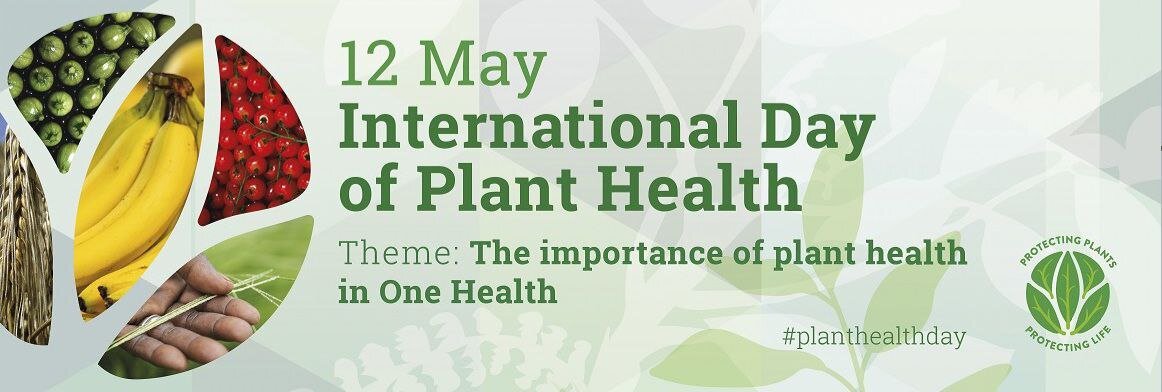Guarding Greenery: How Safeguarding Plants Saves Lives!
In today’s world, the importance of plant health cannot be overstated. Plants serve as the primary producers of biomass, providing essential food, medicine, and a beautiful landscape that enriches our lives. Protecting these vital organisms is crucial not only for our survival but also for the well-being of the planet. This article explores the significance of plant health and the various actions we can take to safeguard it.
Plants are the backbone of our food systems, supplying 80% of the food we consume and producing 98% of the oxygen we breathe. As such, maintaining plant health is fundamental for achieving food security, combating poverty, and protecting biodiversity. Healthy plants contribute to a balanced ecosystem and provide nutrient-rich diets for both humans and animals.
Despite their importance, plants have faced significant neglect in recent years, leading to alarming rates of extinction among various species. It’s estimated that humans lose as much as 40% of crops due to pests, which poses a serious threat to global food security, biodiversity, and local economies. Pest-infected plants can cause a chain reaction of negative consequences, including outbreaks of zoonotic diseases that are transmitted through harmful pathogens.
While pesticides are commonly used for pest management, their overuse and mismanagement can lead to biodiversity loss, environmental pollution, and food safety concerns. Therefore, finding a balance in pest management practices is essential to protect both plant health and the broader environment.
Recognizing the need for action, the United Nations has designated May 12 as the International Day of Plant Health (IDPH). This day serves as a call to action for individuals and communities worldwide to take steps to ensure the health of plants, animals, humans, and the environment.
Plants are not merely background elements in our lives; they play a central role in the health of our planet. The One Health approach highlights the interconnectedness of people, animals, plants, and ecosystems, underscoring the importance of plant health as a vital yet often overlooked pillar.
Investing in plant health can have far-reaching benefits, including:
- Strengthening rural economies
- Building resilience to economic shocks
- Contributing to climate change mitigation
For instance, forests, grasslands, and peatlands act as carbon sinks, absorbing approximately 2.6 billion tonnes of carbon dioxide annually. This process plays a critical role in combating climate change and improving air quality. Maintaining plant health is essential for both mitigating and adapting to climate threats.
Moreover, healthy plants contribute to clean water. With over 80% of wastewater being discharged untreated into the environment, healthy vegetation acts as a natural filter, enhancing water quality and reducing the risk of waterborne diseases.
Plants also regulate key environmental systems by:
- Stabilizing soils
- Filtering air and water
- Regulating the water cycle
- Supporting biodiversity
By preventing soil erosion and protecting beneficial insects like bees, plants help reduce the reliance on chemicals, which can have detrimental effects on the environment. The loss of biodiversity weakens ecosystem resilience, making both the environment and human communities more vulnerable to climate extremes, pests, and disease outbreaks.
In Iran, the diversity of plant life is particularly unique in West Asia, ranking second only to Turkey. The country is home to approximately 8,000 native species, of which around 1,800 are endemic. These endemic species are restricted to specific geographical areas, making their conservation even more critical.
However, indiscriminate harvesting and climate change, especially drought, have led to the destruction of many plant species. Plants exhibit varying resilience to drought based on their species, genetic composition, and the geographical region in which they grow. While some species can withstand extreme climatic conditions, rare endemic species are often more sensitive and vulnerable to environmental stresses.
To mitigate the impacts of climate change and protect plants, several measures can be implemented:
- Manage the exploitation of natural resources
- Prevent the destruction of ecosystems
- Reduce greenhouse gas emissions through coordinated global efforts
Additionally, raising public awareness about the importance of protecting nature is vital. Educating communities can empower individuals and governments alike to take action to preserve our planet’s vital plant resources.
In conclusion, the health of plants is integral to the health of humans, animals, and the environment. By taking proactive steps to protect plant health, we can pave the way for a sustainable future where biodiversity thrives, food security is ensured, and the planet remains a livable space for generations to come.






